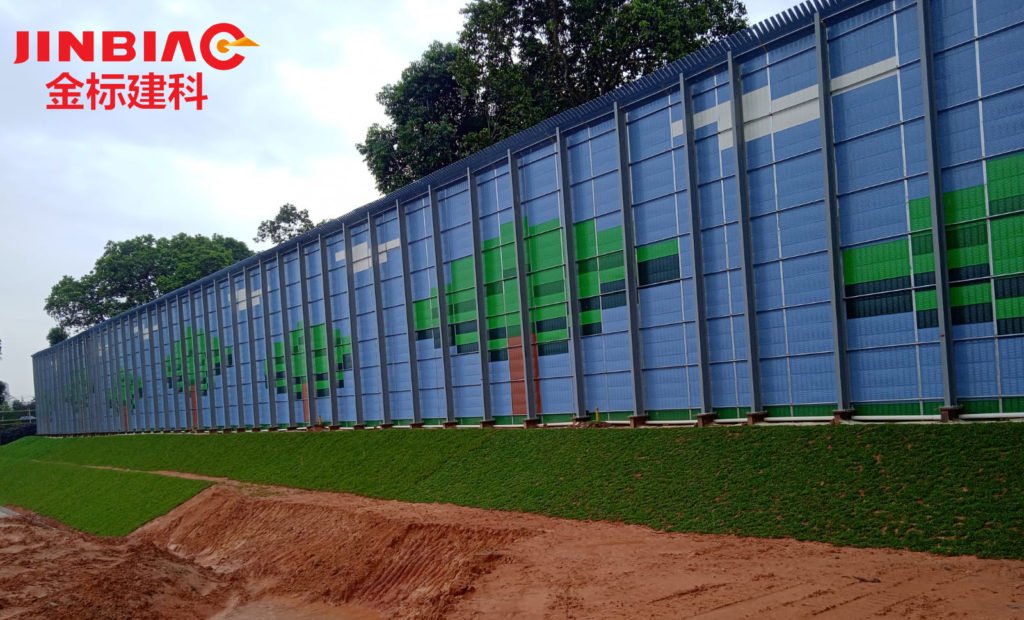
Noise pollution is a serious issue in densely populated cities like Singapore. With the increasing number of vehicles on the road and the constant construction work, noise barriers have become a necessity to keep the noise levels in check. In this blog post, we will be discussing how noise barriers are constructed in Singapore.
The construction of noise barriers is a complex process that involves careful planning, design, and execution. Singapore has a strict set of guidelines that must be followed during the construction of noise barriers to ensure that they are effective and safe. These guidelines include factors such as the height of the barrier, the materials used, and the distance between the barrier and the source of the noise.
- Concrete and steel construction techniques
When it comes to constructing noise barriers in Singapore, one of the most commonly used techniques is concrete and steel. This approach has proven to be highly effective in reducing the amount of noise pollution in highly populated areas, such as along highways and near airports.
Concrete and steel noise barriers are designed to absorb and reflect sound waves, effectively reducing the amount of noise that is transmitted through the barrier. In addition, these materials are highly durable and can withstand the harsh weather conditions that are common in Singapore. They are also resistant to damage from vehicular traffic, making them a reliable and long-lasting solution for reducing noise pollution in urban areas.
- Innovative designs minimize noise pollution
In Singapore, noise pollution is a serious concern due to the city-state’s high population density and urbanization. To address this issue, innovative designs are employed in the construction of noise barriers to minimize noise pollution. These designs take into consideration the specific location and the type of noise source.
For example, if the noise source is a busy highway, a more solid and thicker noise barrier may be required to effectively reduce the noise level. Alternatively, if the noise source is a train track, a noise barrier with a perforated surface may be used. This allows sound to pass through but reduces the overall noise level. In addition to these design considerations, materials such as concrete, steel, and composite materials are used to construct the noise barriers, ensuring durability and effectiveness in reducing noise pollution.
- Strategic placement for maximum effectiveness
One important aspect of building effective noise barriers in Singapore is strategic placement. This involves careful consideration of the location, height, and length of the barrier, as well as the surrounding landscape and environment. For example, barriers are typically placed along major roads and highways where noise pollution is most severe. They are also positioned in a way that maximizes their effectiveness, such as angling them to reflect sound waves away from nearby buildings or residential areas.
These barriers may be designed to complement the surrounding environment, incorporating natural features like trees and shrubs to enhance their visual appeal while also providing additional sound absorption. All of these factors must be taken into account during the planning and construction phases to ensure that noise barriers are strategically placed for maximum effectiveness.
- Rigorous testing and safety standards
When it comes to constructing noise barriers in Singapore, rigorous testing and safety standards are crucial components of the process. These measures are put in place to ensure that the noise barriers are constructed to meet the highest standards of safety, durability, and effectiveness.
Before any noise barriers are installed, they must undergo extensive testing to ensure that they can withstand the harsh environmental conditions in Singapore, such as high levels of humidity, heat, and rainfall. In addition to testing, safety standards are also strictly enforced throughout the construction process to ensure that workers are protected from potential hazards and that the final product meets all safety requirements.
- Ongoing maintenance and upkeep
The construction of noise barriers in Singapore is a complex process that requires careful planning and execution. One of the most important aspects of the process is ongoing maintenance and upkeep. Noise barriers must be properly maintained in order to ensure their effectiveness in reducing noise pollution. This involves regular inspection and cleaning to remove any debris or other materials that may accumulate on or near the barrier. In addition, any damage or deterioration must be promptly repaired to prevent further deterioration and maintain the barrier’s structural integrity.
Proper maintenance and upkeep not only ensures the effectiveness of the noise barrier, but also helps to extend its lifespan, reducing the need for costly replacements or repairs in the future. As such, ongoing maintenance and upkeep is a critical component of the construction process for noise barriers in Singapore.
Hebei Jinbiao is a leading company in Noise Barrier products and Fencing products in Singapore. We guarantee to provide you with the most high-quality Sound Barrier and Fencing products along with our dedicated assistance. Do not hesitate to contact us. We are looking forward to helping you solve your noise issues, safety issues and protecting you from noise pollution as well as ensuring your safety.
